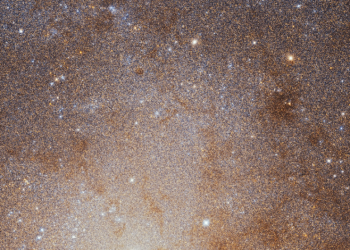As we peer into the cosmos, the discovery of an Earth-like planet orbiting a dead star 4,000 light years away provides scientists with a glimpse into what might await our planet. This distant planetary system, located in the Milky Way, offers insights into the potential fate of Earth once our sun transforms into a white dwarf.
In a scenario billions of years from now, the sun will undergo dramatic changes. Our star will expand into a red giant, swallowing Mercury and Venus along the way. Earth, too, may find itself in peril as its orbit shifts outward. But could our planet survive such a cataclysmic transformation?
This new discovery, observed using the Keck 10-meter telescope in Hawaii by a team of astronomers from the University of California, Berkeley, suggests that it might be possible. The system they studied features a white dwarf — a stellar remnant about half the mass of our sun — and a planet that appears to be Earth-sized, orbiting at a distance twice that of our planet’s current position relative to the sun. This provides a potential model for Earth’s future when the sun has finished its life cycle.
The Evolution of the Sun and Its Impact on Earth
As the sun ages, it will swell into a red giant, causing its outer layers to expand and push planets into more distant orbits. Earth, if it manages to avoid being engulfed, could drift farther from the sun. However, the extreme conditions created by the dying star will likely leave our planet a barren, frozen wasteland.
Approximately 8 billion years from now, the sun will shed its outer layers, leaving behind a small, dense white dwarf. If Earth still exists by then, it might end up in an orbit twice as far from this remnant star. However, by that time, the planet would be inhospitable, with its oceans long evaporated by the intense heat of the red giant phase.
Keming Zhang, the lead researcher on this study and now a postdoctoral fellow at UC San Diego, explains that we don’t know for certain if Earth will avoid being consumed by the red giant. Regardless, Earth will likely remain habitable for only another billion years, far before the red giant phase even begins, as runaway greenhouse effects will render the planet uninhabitable.
Survival Beyond the Habitable Zone
This newly discovered planetary system demonstrates that planets can, in some cases, survive the intense transformation of their host stars. While the planet in question now orbits outside the habitable zone of its white dwarf star, it may have once had conditions conducive to life when its star was still in its prime.

As Jessica Lu, an associate professor of astronomy at UC Berkeley, points out, this discovery is an example of a planet that likely shared many similarities with Earth before surviving the red giant phase of its star. Whether life could continue on Earth through such a process is still uncertain, but survival in some form is not out of the question.
A Window Into Distant Worlds
The discovery of this planet was made possible through an effect known as microlensing, which occurs when a star passes in front of another, amplifying the light of the more distant star. The gravity of the lensing star acts like a magnifying glass, allowing astronomers to detect planets and stellar remnants that would otherwise be invisible.
In this case, the event, known as KMT-2020-BLG-0414, was detected in 2020 by the Korea Microlensing Telescope Network. The system’s white dwarf and planets were too faint to observe directly, but their gravitational effect on the light of the background star revealed their presence. Follow-up observations with the Keck telescope in 2023 confirmed that the star is indeed a white dwarf, as no light from a main-sequence star could be detected.
Microlensing offers a unique way to discover and study planets orbiting stars that are otherwise difficult to observe. Zhang and his team hope that further studies using this method will shed more light on the variety of planetary systems that exist, particularly those around stellar remnants like white dwarfs.
The future of exoplanet discovery is promising, with NASA’s upcoming Nancy Grace Roman Telescope set to launch in 2027. This mission will focus on detecting microlensing events, potentially uncovering more planets in similar circumstances to this newly discovered system.
A Refuge Beyond Earth?
Even if Earth is ultimately consumed by the sun during its red giant phase, humanity might find new homes elsewhere in the solar system. Several of Jupiter and Saturn’s moons, such as Europa and Enceladus, contain frozen oceans that could thaw as the sun expands. These moons, currently inhospitable, may become viable locations for life as the habitable zone shifts outward.
Zhang suggests that as the sun’s transformation progresses, humanity might migrate to these distant moons. If we can find a way to survive the harsh conditions of deep space, these ocean worlds could serve as a refuge for future generations. This discovery offers a humbling reminder of our planet’s impermanence in the grand scheme of the universe. But it also provides a glimmer of hope — a vision of how life might continue, even after our sun has faded into “darkness.”











